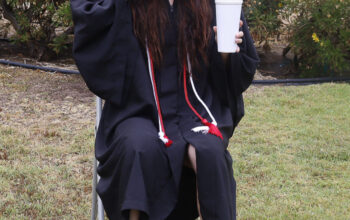Run, hide, fight. This is the advice given by the Department of Homeland Security in a pamphlet on how to respond in the event of an active shooter as distributed by the Pierce College sheriff’s department.
The distribution and instruction of these directions are a reaction to the recent shootings at Sandy Hook Elementary School and the Aurora, Colo. Century Theater.
But there are many ways the administration can make these directions more effective for Pierce students and faculty.
Pierce-goers are urged first to run from the danger, but what if someone has not heard the gun fire nor seen the shooter?
To keep students and faculty informed, the administration should look into a text message alert system and the installation of a public address (P.A.) system.
A text alert system proved useful in informing students at California State University, Northridge a few semesters ago when the Pierce neighbor had their own shooter scare that turned out to be a false alarm.
Though there was no real danger, students and faculty were alert of potential danger, and informed, which allowed them to stay out of the potential danger area.
For those without a cellphone, the P.A. system would pick up the slack, such as is present on the campus of El Camino College.
A P.A. system could keep everyone informed of where on campus the threat is regardless of if they do not have a phone, forgot it in their car or just happened to run out of charge.
The next piece of advice in the event of an active shooter is to hide from danger.
The pamphlet also reads that bystanders should barricade entry and lock the door of where you choose to hide out. Therein lies the problem for Pierce students and faculty.
A quick survey of the campus shows that many doors do not lock from the inside, such as in the Village, or a number of rooms seemingly randomly assorted in the Business Education Center and the gyms.
Classroom occupants are encouraged to barricade doors, but with many classrooms having outward-opening doors, this is not entirely effective. The door can still be opened, and a barricaded room is a good indication that there are people hiding inside.
Students and faculty could simply hide and hope their room is not approached by the active shooter, though hoping and praying does little to actually protect one from the reality of the situation.
This means, to truly secure the door, one would have to step outside and put their life at risk to secure the room and its occupants.
One cannot be expected to crack open the door, quickly reach out, turn the key in the slot, and hope they’re not noticed
Should all doors on campus be locked at all times?
Should students and faculty learn secret knocks to be allowed in?
Students and faculty near the active shooter might have no time to run to safety or properly barricade a door, if even possible. So, they must be given an alternative to putting themselves in the line of fire.
The administration needs to look into the installation of indoor locks on all doors on campus.
The last option is to fight, but there is no advice to be given on how to do this besides using anything available as a weapon. This is only recommended in a last-shot scenario.
As for what the administration can do to help with keeping students safe, it is no question that these systems will require a lot of money, a lot of labor, and especially some time to get the plans going.
Though this is true, no cost is too high to ensure the safety of faculty and students. The Roundup encourages the Pierce leadership and committees to begin looking into these costs.
With an extra focus on awareness and preparation in the instance of an active shooter were coming to Pierce, the administration should show it means business by looking into the installation and establishment of these solutions as soon as possible.


